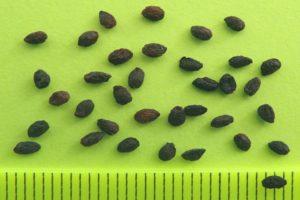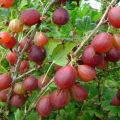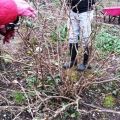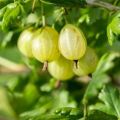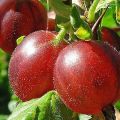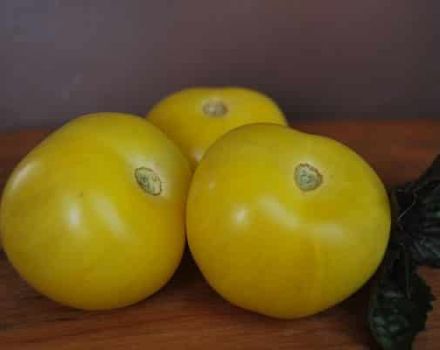Description of the gooseberry variety Yellow Russian, cultivation and care
The demand for the Russian yellow gooseberry is due to its resistance to adverse environmental factors and excellent consumer qualities. It was bred at the beginning of 1970 on the basis of the Michurin Research Institute of Horticulture using the method of clone selection. For the works were taken Careless, Curry, Shtambovy, Oregon. For the successful cultivation of this gooseberry variety, you need to know how and when to plant it in an open area, the subtleties of care.
Description and characteristics of the variety Russian yellow
The plant is of medium height, slightly more than 1 meter in height. The bush forms spreading branches, the degree of their thorniness is average. Young shoots are light green in color, while adult branches are rich brown. Leaf plates are small, green, without pubescence. Blunt teeth are visible on them.
Brown buds are small, oblong in shape, thorns are placed in the rhizome area. On the brush, 1-2 pale flowers are formed. The oval-shaped berries are distinguished by their amber color, moderately dense skin with many light veins. They have a waxy coating, weighing up to 6 grams.
According to the description, the fruits of the gooseberry Russian yellow contain ascorbic acid 12 milligrams per 100 grams, sugars 9.3%. The acidity indicators are 2%. On average, the productivity of the bush is 5 kilograms without pollinators. The berry shrub, due to its resistance to low temperatures, tolerates winter calmly, even with little snow. In addition, the variety is not afraid of dry weather.
Russian yellow gooseberry is excellent for industrial cultivation, its berries are highly transportable.

Advantages and disadvantages of gooseberry
Among the advantages of the Russian yellow gooseberry, experienced gardeners note:
- high degree of drought resistance;
- sufficient frost resistance (up to -28 degrees);
- long shelf life of fruits;
- high productivity;
- large-fruited;
- self-fertility;
- unpretentiousness to growing conditions.
Gooseberry cons are:
- the presence of a large number of thorns that complicate harvesting;
- average level of resistance to major diseases;
- the need for a garter of spreading bush branches.
Each berry culture has its own strengths and weaknesses, but knowing them makes it possible to grow a healthy and abundantly fruiting Russian yellow gooseberry bush on the site.
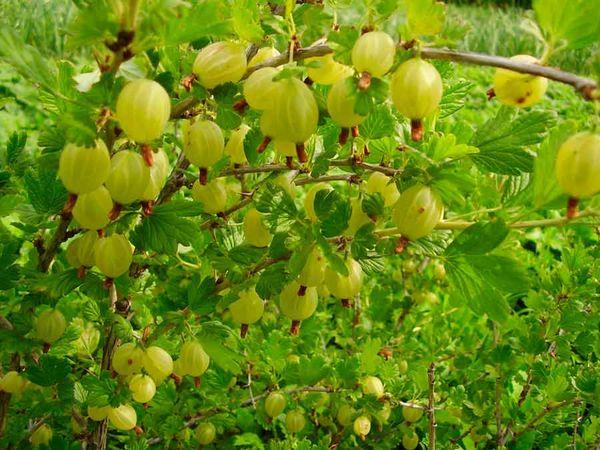
Growing features
Despite the relative undemandingness of the variety to the soil and planting, the Russian yellow gooseberry grows and develops more efficiently if you follow certain recommendations for planting it in an open area.
Choosing a place and landing dates
It is possible to achieve the desired results when placing the Russian yellow gooseberry on glades with a sufficient level of illumination and protection from through winds. To avoid the development of root rot, you should not choose wetlands and with a close occurrence of groundwater.
The soil should be loamy or chernozem with a neutral environment. Since the berry shrub is characterized by spreading branches, the distance between the plants should be 1.5-2 meters.
The optimal time for planting is spring before bud break or autumn (September). The main thing is to be in time before the arrival of cold weather.
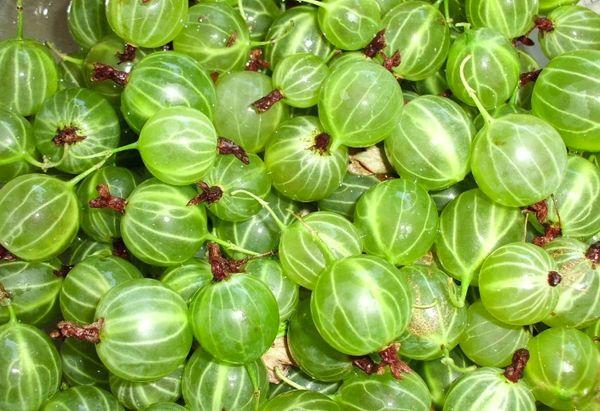
The choice of planting material
When buying seedlings, you should pay attention to their appearance. They should not show any signs of disease, damage, rot. It is best to choose one- or two-year-old specimens that contain several powerful shoots, and a sufficiently developed root system 12-15 centimeters long.
Planting process
For quick survival, the Russian yellow gooseberry is planted taking into account the following technology:
- The site for planting should be cleared of weeds, dug deep to improve the water and nutritional regime. Add humus to the soil.
- After that, dig a pit 60x60x60 cm in size.
- Add organic fertilizer (humus). Layer thickness 20 cm.
- Place the seedling in the hole, spread its roots and sprinkle gently with soil. The root collar should be 5-7 centimeters below ground level.
- Water abundantly using 10 liters of water per planting.
- After absorbing water, the soil in the trunk circle must be mulched with peat and sawdust.
To improve the growth of new shoots, the stems of the Russian yellow gooseberry are recommended to be shortened by 1/3 of the entire length.
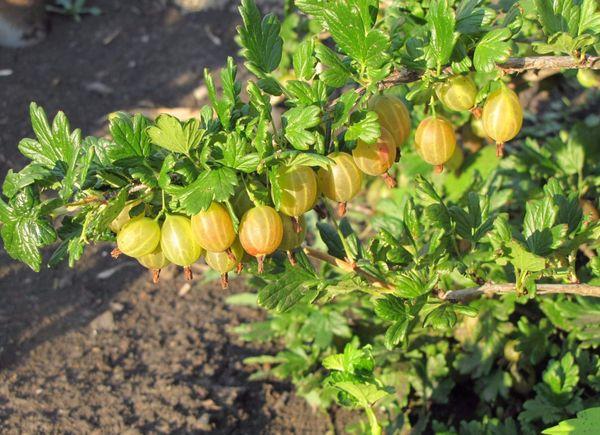
The nuances of care
To get large and tasty fruits of the Russian yellow gooseberry, you need to water it correctly, regularly weed the plantings, feed and protect against diseases, harmful insects.
How to water
Irrigate the Russian yellow gooseberry in the dry season once a week. The soil should be moistened 40 cm deep. Watering is especially important for garden plantings at the flowering stage (in May), berry filling (mid-late June). In autumn (September), the bushes need water-charging irrigation if there is no rain for a long time.
Fertilization
The first feeding procedure is done in early spring (during the opening of the leaves). Urea or ammonium nitrate is used for these purposes at the rate of 50 grams per planting. The nutrient composition is distributed along the near-trunk circle and the soil is loosened. Alternatively, you can make a working solution using 50 grams of the product and 10 liters of water or mullein infusion in a ratio of 1:10.

In the phase of bud formation and flowering, feeding procedures are done using wood ash (1 glass per 10 liters of water). Infusion of nettle works well, it is used in a ratio of 1: 5 (one part of concentrate and 5 parts of water). 10 liters of solution are consumed per bush.
After harvesting, the Russian yellow gooseberry is fed with superphosphate. It is buried in the ground at the rate of 30 grams per planting.
Bush formation
The classic way of forming Russian yellow gooseberries provides for the following algorithm of actions:
- After planting, all shoots are shortened by 1/3.
- The next year (in spring), the already existing, fruiting branches and 3-5 replacement shoots are left. The excess is removed at ground level.
- In the third year, you need to add the same number of shoots. Thus, the formation of the Russian yellow gooseberry takes place within 5 years.Ultimately, there should be 20-25 branches.
- From the sixth year, the bush should be rid of last year's and old branches, leaving only strong young growth.

Wintering
Since the Russian yellow gooseberry has sufficient resistance to frost, it does not need additional protection. The main thing is to remove all props so that the branches are closer to the ground. This is especially true for bushes, for which a metal wire is used.
It is necessary to remove fallen leaves, berries from the trunk circle, and the mulching layer should be completely replaced with a new one (wood sawdust, peat).
Protection against diseases and pests
The development of dangerous ailments and the invasion of parasites can be prevented with the help of preventive measures. 14 days before the flowering phase and 2 weeks after it, the Russian yellow gooseberry bushes must be treated with special preparations. It is still effective to do procedures after fruiting.
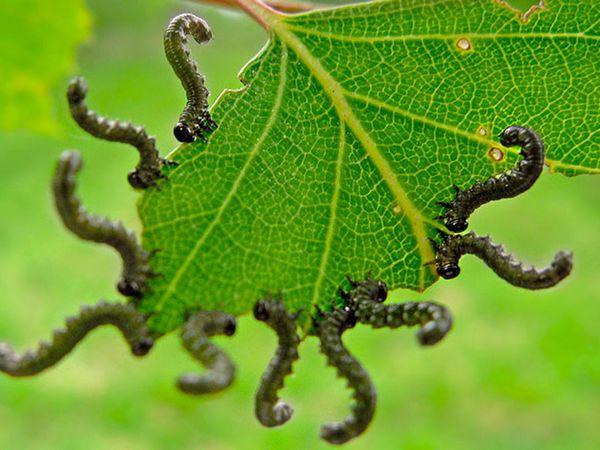
All fallen leaves in the fall should be disposed of, it may contain pathogenic microorganisms, pests.
Reproduction
Gooseberry Russian yellow is best planted by dividing the bush. The overgrown plant is removed from the soil in late autumn, using a saw, it is divided into 2-3 parts. After that, they are buried in the prepared pits 5-7 centimeters lower than the mother bush grew. Thanks to watering, the earth will be compacted, and in the spring the delenki are spud to stimulate the growth of new roots.
Collection and storage
The berries are removed in the last days of July. Depending on the purpose, they are collected in 2-3 doses. For winter harvesting, berries are picked at the stage of their technical maturity, and for fresh use they are fully ripe. The crop is not afraid of long distance transportation.
Gooseberry Russian yellow, by right, is considered a promising variety. It shows a high degree of performance with minimal maintenance. It can be grown not only in regions with a warm climate, but also with severe winters. Proper agricultural practices and healthy seedlings are the key to harvesting a bountiful harvest.
